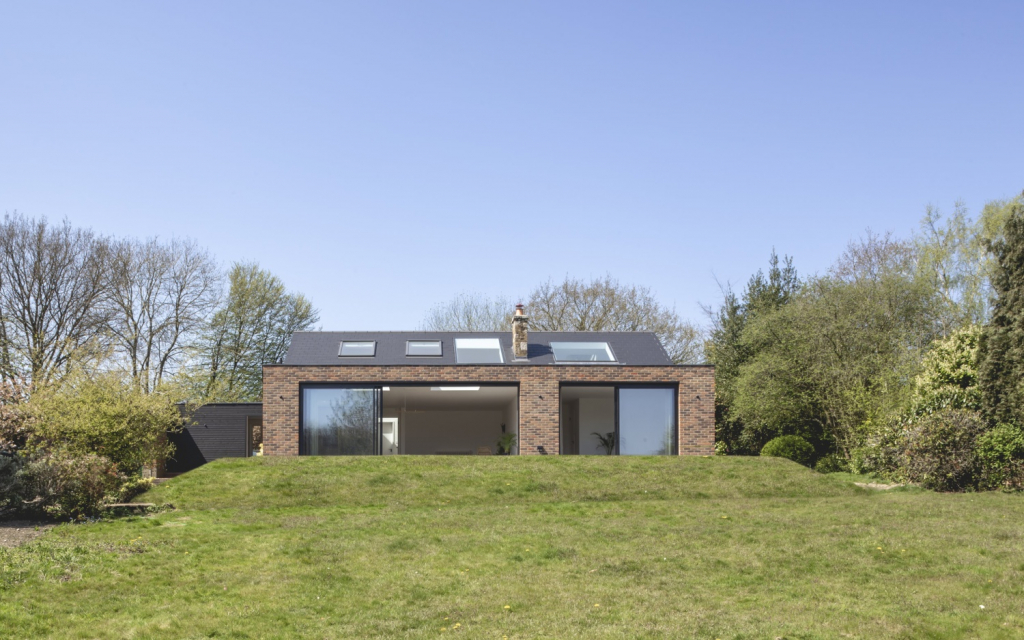Converting a bungalow to a house
A bungalow conversion to a house can involve some or all of the following work:
- adding an extra storey
- a loft conversion (within the existing roof space)
- a loft extension (e.g. adding dormers or changing roof shape)
- adding a basement below an existing bungalow.
In addition to this, you may also be looking to extend outwards.
Title image above is this bungalow conversion in Kent by Hubert, architectural designer on Design for Me. See the case study link below for more information.
Case studies
Below are two examples of bungalow conversions, where the client found their architect through Design for Me. Click the links below for costs, ideas and inspiration for your own bungalow conversion:
Bungalow conversion types and planning permission
Bungalows can provide exciting opportunities for development, and one of the first things to consider is what will be accepted in planning terms. There may also be some work that you can do without needing planning permission (permitted development).
Permitted development – do you need permission to add a storey to a bungalow?
You can add one additional storey to a bungalow, without needing planning permission, as long as the following conditions are met:
- The bungalow was constructed between 1 July 1948 and 5 March 2018.
- You submit an application to your local authority for prior approval.
- The existing bungalow is a single dwelling and it hasn’t previously had a change of use under permitted development.
- It’s not previously been extended upwards.
- You’re not adding more than 3.5m to the total height (and if it adjoins another house, it can’t be more than 3.5m taller than the adjoining house / tallest house in the terrace).
- The floor to ceiling height internally of the new storey should not exceed 3m (or the internal height of the existing house).
- It’s not on Article 2(3) land or a site of specific interest.
- The additional storey is constructed on the principal part of the house.
- Engineering operations must stay within the existing curtilage of the house to strengthen walls and foundations.
- There are no new windows to the side elevations of the house.
- Exterior finishes/materials must be similar to the existing.
- The roof pitch should be the same as the principal part of the original house.
The above list may not be exhaustive to your specific conditions and you should always check with your local authority before proceeding with work. We strongly recommend obtaining a certificate of lawful development for the work.
Do you need planning permission for a bungalow loft conversion?
Planning permission for loft conversions or roof extensions for a bungalow are the same as a two-storey house. Read our comprehensive article on loft conversions, including costs and head height restrictions here.
Permitted development rules for loft conversions
1. An extension beyond the plane of the existing roof slope of the principal elevation that fronts a highway is NOT permitted development.
2. Materials must be similar in appearance to the existing house.
3. It cannot extend up beyond the existing highest point of the house.
4. No verandas, balconies or raised platforms.
5. Any side-facing windows must be obscure glazed and non-opening unless the parts which can be opened are more than 1.7 metres above the floor of the room in which it is installed.
6. It must not exceed 40 cubic metres for terraced houses and 50 cubic metres for detached and semi-detached houses.
7. Roof extensions, apart from hip to gable ones, must be set back at least 20cm from the original eaves. The 20cm distance is measured along the roof plane. (fig.1)

fig.1
Summarised from information provided by the Planning Portal. Please consult with your local planning department directly before undertaking your extension.
Do you need planning permission for a basement extension to a bungalow?
The rules for basement extensions for a bungalow are basically the same as for a two-storey house. You can see our full article about planning permission and basement extensions here. In summary, unless you are simply converting an existing basement, it’s likely that you will require planning permission to excavate to create a new storey beneath your bungalow.
In all cases, you should always seek advice from your local planning authority. However, with complex projects, it’s usually best to do this via your architect, who will know the best way to approach them and present your intentions.
Unless you are planning a straight conversion of an existing space, basement extensions requiring excavation are more complex projects than other residential extensions. Therefore, it’s very important to engage the right team of experts. The first step is usually to hire an architect, who can then help you hire other necessary professionals (usually a structural engineer and party wall surveyor) and ensure you meet the appropriate statutory obligations.
Read more about basement development from our blog:
Planning rules for basement extensions
Basement extension ideas and inspiration
How much does a basement extension cost?
Finding the right architect for your bungalow conversion
Design for Me is a free platform to help you quickly find the right design professional for your home project. My name is Emily Barnes and as a residential architect myself, I started Design for Me after finding that talented and innovative smaller firms and individuals, who are perfectly placed to design new homes, extensions and renovations, can often get buried under the online profiles of large commercial companies.
Before Design for Me, the right architect was very difficult to find!
Once you register your project, we’ll match it with 100s of top architects in your area and beyond, and you can see who may be available and eager to work on your project straight away.

